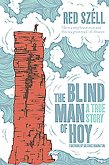Three New York Dadas and The Blind Man relates the story of the triangular relationship between Marcel Duchamp, Henri-Pierre Roché and Beatrice Wood, told in the words of two of its protagonists; and also reprints in facsimile the Dadaist magazine they produced together in New York in 1917: The Blind Man. The principal text is the first English translation of Roché's novel Victor, an account of his friendship with Duchamp (nicknamed Victor by his close friends in those days). Although unfinished, Roché's text offers a unique account of New York Dada, all of whose principal characters and events make an appearance: Francis Picabia, Arthur Cravan, the Arensbergs and their soirées, the Blind Man's Ball and the scandal of Duchamp's "Fountain" at the Independents exhibition, a pivotal moment in modern art. The novel offers interesting insights into the sexual politics of the period, when a woman could be arrested or blackmailed for spending the night with a man to whom she was not married. Roché, a lifelong friend of Duchamp, appears to have been something of a devotee of triangular relationships, and went on to write a more famous novel on the topic (also autobiographical), Jules et Jim--later made into a film by François Truffaut. Beatrice Wood's account of these events is taken from her memoirs; she went on to become a celebrated ceramicist, dying in 1998 aged 105. The introduction and commentary is by Dawn Ades, the well-known scholar of Dada and Surrealism.








